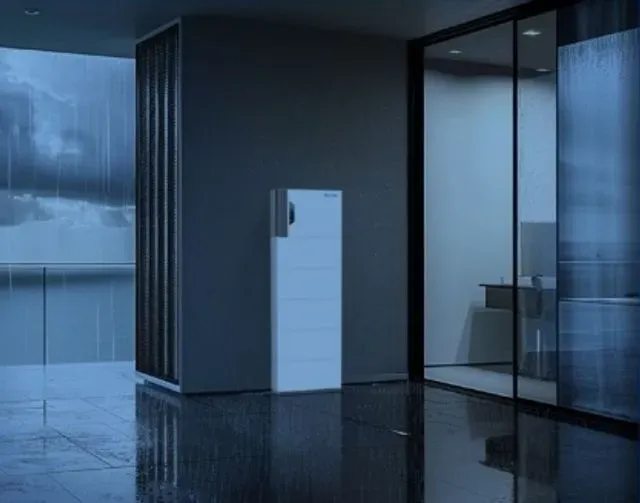
Inquiry
Solar Battery Installation Guide for Residential Projects: Finding the Best Location
When it comes to residential energy storage, solar battery installation isn't just about connecting wires and flipping a switch. The location of your battery can significantly influence safety, performance, and lifespan—especially for integrators and system developers seeking long-term value and compliance. Whether you’re deploying storage in a single-family home or planning scalable solutions across a housing development, understanding site-specific placement best practices is crucial.
This guide walks you through the key factors, compliance standards, and climate considerations for installing solar batteries in residential environments—designed for project managers, electrical contractors, and system integrators working with custom ESS (Energy Storage Systems).
Why Solar Battery Location Matters
In residential ESS deployment, battery location isn’t an afterthought—it’s an operational variable with direct impact on system safety, energy efficiency, and serviceability.
Improper installation locations can result in:
- Thermal buildup from inadequate airflow or solar exposure
- Excessive voltage loss due to long cable runs
- Non-compliance with fire separation or structural regulations
- Restricted access for inspection or service teams
These risks not only compromise long-term system performance but may also lead to warranty limitations, safety violations, and unexpected remediation costs.
By contrast, placing your battery in a well-ventilated, code-compliant, and inverter-adjacent location helps stabilize cell temperatures, reduce resistance, and ensure smooth operation over thousands of cycles. For system integrators, smart placement also simplifies installation timelines, lowers cabling costs, and enhances fault diagnosis.
In short, correct solar battery placement isn’t just good engineering—it’s critical risk control and lifecycle planning.
Key Factors That Influence Solar Battery Placement
Before choosing a specific location for solar battery installation, it's essential to evaluate a range of technical and environmental factors. These directly affect safety, efficiency, and long-term performance:
- Ventilation: Adequate airflow helps regulate battery temperature and reduces the risk of overheating.
- Ambient Temperature: Avoid extreme heat or cold that can degrade battery chemistry and performance.
- Sunlight Exposure: Batteries should be shaded or enclosed to prevent solar heat gain.
- Distance to Inverter: Shorter cable runs minimize voltage drop and improve system efficiency.
- Fire Safety Compliance: Follow local codes on clearance from doors, windows, and habitable rooms.
- Moisture and Flooding Risks: Particularly relevant for basements or outdoor ground-level installs.
- Ease of Maintenance: Ensure sufficient space and access for servicing and monitoring.
- Structural Suitability: Confirm that walls or enclosures can support the battery’s weight and meet installation code requirements.
Choosing the best location for your solar battery system means aligning with local and national safety regulations. Here’s a regional solar battery install compliance for the USA, Europe & Australia:
| Region | Key Standards | Indoor Installation | Outdoor Installation | Notes |
|---|---|---|---|---|
| 🇺🇸 United States | NFPA 855 + UL 9540A | Permitted (e.g., garages) with fire-rated barriers | Must use fire-resistant barriers if close to house | ≥ 3 ft from doors/windows; UL 9540A testing required |
| 🇪🇺 Europe | EN 62619 + local codes | Preferred in colder regions (e.g., basements in Germany) | Compliant with structural/fire safety | Follow DIN VDE 0100 wiring rules |
| 🇦🇺 Australia | AS/NZS 5139 | Heavily restricted, FR30 enclosure required | IP-rated, UV-protected, ventilated cabinet required | ≥ 1.5 m from any entry/exit point |
Tip: Always verify with local authorities (AHJ) for site-specific rules.
Choosing the Best Location for Your Solar Battery
Selecting the optimal location for your solar battery is critical for safety, efficiency, and longevity in residential solar projects.
Indoor Solar Battery Installation Locations
1. Garage
- Pros: Typically spacious, well-ventilated, and close to the inverter, minimizing cable length and voltage loss.
- Cons: Keep batteries clear of vehicles; may require a fire-rated enclosure.
- Suitability: Ideal for humid or temperate climates. Use a dehumidifier and anti-rust casing in high-humidity areas.
- Tip: Maintain at least 1 meter clearance from vehicles for safety.
2. Utility Room
- Pros: Central location enables short, neat cable runs to the inverter, saving space.
- Cons: Small spaces may cause heat buildup due to limited airflow.
- Suitability: Perfect for compact homes like townhouses or apartments with limited space.
- Tip: Install a small fan to enhance airflow and prevent overheating.
3. Basement
- Pros: Offers stable temperatures and protection from outdoor elements.
- Cons: Risk of moisture or flooding; airflow may be limited.
- Suitability: Best for colder climates with proper moisture control (e.g., sealing, heating pads, or ventilation fans).
- Tip: Use a moisture barrier and monitor humidity regularly.
Best for:
- Detached Homes: Flexible placement in garages, utility rooms, or basements.
- Townhouses: Compact or vertical enclosures for space-constrained interiors.
- Apartments: Wall-mounted units in shared utility spaces or enclosed balconies, if allowed by local codes.
Outdoor Solar Battery Locations
Outdoor setups are suitable when indoor space is limited or local codes restrict indoor battery placement. Focus on protecting against heat, moisture, and direct sunlight.
1. Shaded External Wall
- Pros: Quick to install, space-efficient, and ideal for retrofits.
- Cons: Requires fire-resistant backboards; adjacent walls need protection.
- Suitability: Best for hot-arid climates with shaded areas to reduce heat exposure.
- Tip: Use reflective paint or liquid cooling to manage heat effectively.
2. Canopy or Awning Area
- Pros: Protects from sun and rain while maintaining airflow.
- Cons: Must ensure sufficient ventilation and easy maintenance access.
- Suitability: Works well in most climates with overhead protection.
- Tip: Verify the canopy allows enough clearance for servicing.
3. Standalone Outdoor Enclosure
- Pros: Ideal for larger or modular solar systems, offering flexibility for high-load setups.
- Cons: Higher cost; requires IP-rated enclosures for weather, thermal, and lightning protection.
- Suitability: Perfect for properties with ample outdoor space or strict indoor restrictions.
- Tip: Choose a well-ventilated, climate-appropriate enclosure.
Best Practice: Position the battery within 5 meters of the inverter and main panel to reduce voltage loss and installation costs. Use high-quality, low-resistance cables for optimal performance.
Also read: Can Solar Batteries Be Installed Outside?
Key Considerations
- Indoor: Ensure proper ventilation, fire safety, and moisture control for a stable environment.
- Outdoor: Prioritize weather protection, heat management, and accessibility for durability.
Always consult local building codes and a professional installer to ensure compliance and safety.
Design & Installation Tips
A robust solar battery installation depends not only on where you place the system, but how you prepare for its long-term operation. Below are key considerations to support installation quality, safety, and performance:
- Enclosure Type: Choose IP65-rated, UV-resistant, or fire-rated enclosures depending on whether the battery is installed indoors or outdoors.
- Wiring & Losses: Keep cable distance between battery and inverter under 5 meters and ensure voltage drop remains below 1% by sizing cables appropriately.
- Space Planning: Allow at least 20% spare volume inside the enclosure for airflow and future upgrades. Request dimensional drawings and clearance guidelines from your supplier.
- Thermal Management: Use passive airflow or forced ventilation for indoor areas; in hot climates, consider closed-loop liquid cooling to manage heat buildup.
- System Monitoring: Include a smart BMS and enable remote access to support predictive maintenance and real-time diagnostics.
Conclusion: Plan Smart, Build Safe
Effective solar battery installation begins with strategic location planning—balancing safety standards, energy efficiency, and ease of service. Choosing the best installation site—whether indoors in a temperature-stable garage or outdoors in a ventilated enclosure—lays the groundwork for system longevity, user safety, and cost-effective integration.
As a trusted provider of residential energy storage solutions, ACE Battery combines technical expertise with system-level insight to support your installation needs. Our product portfolio includes wall-mounted and floor-standing battery units, IP65-rated outdoor cabinets, and modular configurations designed for diverse building types and climate zones.
Looking to optimize your residential energy storage system? ACE Battery offers tailored siting advice, enclosure design recommendations, and system layout support—all aligned with current safety standards and performance requirements.
Contact the ACE Battery engineering team for a home battery storage system layout proposal including compliant battery placement recommendations.
FAQs about solar battery installation for residential projects
Q1: What is the best location for a solar battery in a residential setting?
A: Garage or basement, if allowed by local codes. Outdoor wall-mounted units also work well with proper enclosure.
Q2: Can I install solar batteries on a wooden wall?
A: Yes, but only with fire-resistant backing (e.g., cement board) and required clearances.
Q3: How far should the battery be from the inverter?
A: Ideally less than 5 meters to minimize resistance and improve efficiency.
Q4: Are indoor batteries safer than outdoor ones?
A: Not necessarily—safety depends more on enclosure design, ventilation, and installation quality.
Our expert will reach you out if you have any questions!


